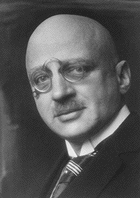Right from the Stone Age, the dawn of humanity, crops had been an essential part of a human’s diet- when humans began to harvest food rather than to hunt it, where both luck and skill was required to obtain food. Crops proved to be a more dependable source of nourishment. However, after years and years of sowing and harvesting crops, the soil in which they were planted in began to lose its fertility, becoming less and less productive as the years went by, and the food supply gradually began shrinking. It was eventually discovered that the availability of nitrates in the soil limited the crop’s growth and farmers tried many methods to nourish the soil with nitrates, but to no avail. (This story detailed in the history section)
However, sometime in the early 20th century, two German scientists, Carl Bosch and Fritz Haber developed a process known today as the Haber-Bosch or Haber process, used to produce ammonia, with the use of Nitrogen from the air and Hydrogen. The arrival of this process solved a teething problem facing humanity at that point in time; food. Starvation was rampant all over the world, as the food supply couldn’t keep up with population growth, many died of hunger during that time. This ammonia produced was reacted to form nitrates, which were spread on fields and used as fertilizer to enrich soil, heavily boosting crop growth, solving the world’s starvation problems to date; this process has remained virtually unchanged, and 100 years later, is still central to the process of crop cultivation and food production.
How does it work? Why are these fertilizers so important to us? How do they benefit plants? Could any problems be caused by them? – Do they pose any threat? All the answers to your questions are just a few clicks away.
Please make yourself familiar with the Haber Bosch Process by viewing the video embedded below courtesy for the BBC network, before diving into my in-depth explanation of the process.

